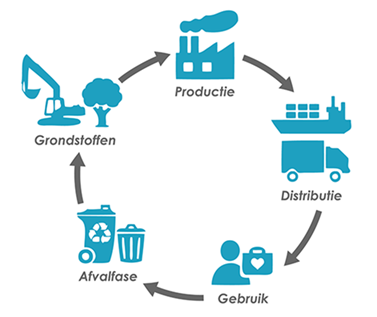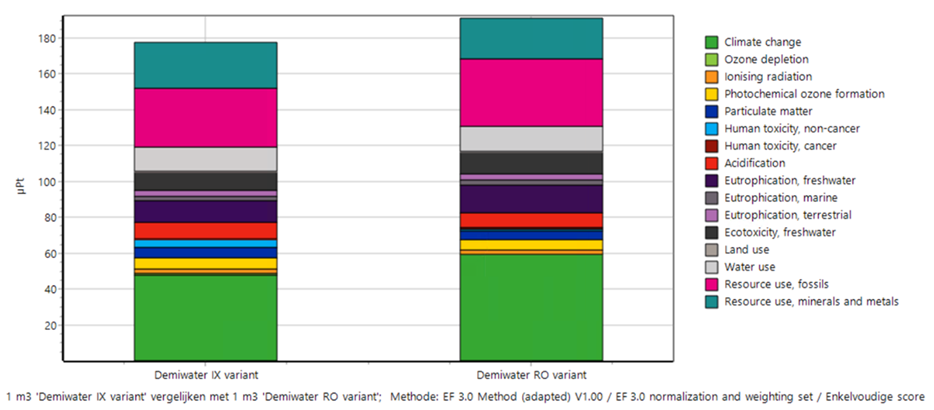Process selection demiwater treatment including LCA
Within our Water Without Waste program we look at the CO2 emissions from our own treatment plants and in the chain, as well as at water abstraction, biodiversity and pollution.
Contact usDetermining environmental impacts
Purifying water has more environmental effects than just climate (CO2). In order to map this out in a good and structured way, we carry out LCAs (Life Cycle Assessments). In an LCA you consider everything that is needed to make your product and that is then translated into environmental effects.
What is the problem
At the end of 2020, a request was received to make a choice of process for a demi-water treatment using pre-treated surface water as feed water. Two variants should be compared, namely ion exchange (IX = ion exchange) and membrane filtration (RO = reverse osmosis). The request was also to compare these 2 variants in terms of environmental impact.
Research
What have we done
Process design
First of all, based on the feed water quality, 2 process designs were made that led to the minimum required final quality. In this phase, aspects have already been taken into account in order to achieve a minimal environmental impact, such as attention to water conservation (high recovery), energy consumption (low energy membranes) and optimal use of chemistry. This resulted in the following 2 variants:
1 softener – reverse osmosis – reverse osmosis
2 cation exchanger – degasser – anion exchanger
The costs have been determined for both variants and LCAs (Life Cycle Analyzes) have been performed to gain insight into the environmental impact.
Life Cycle Analysis as a tool for determining environmental impact
In an LCA, the environmental impact is determined over the entire life cycle, i.e. from the extraction of raw materials up to and including the waste phase. In this project, the LCA was carried out up to and including the production of the demineralised water. After all, we have no insight into its use. The following determining factors can be mentioned in demi-water treatment: feed water, energy, chemistry, consumables (such as resins, membranes), means of production (purification), transport (pipelines).

Below is the result of the LCA comparison between the two variants. It can be seen that the two variants do not differ much from each other. The most important environmental effect is climate change, but depletion of raw materials (fossil fuels, minerals and metals) are also important effects. The comparison was made on the basis of the current electricity mix in order to be able to make a fair comparison between ion exchange with a lot of chemical consumption and reverse osmosis with a lot of electricity consumption. As standard, Evides Industriewater chooses to purchase green electricity, which greatly reduces the climate impact.

Results
Two process variants for demi-water treatment have been worked out and compared, among other things, in terms of financial and environmental impact. In this case, the variant with ion exchange turned out the best, both financially, in terms of environmental impact and in terms of the final quality of the product water. In cases where the more environmentally friendly variant is more expensive, the environmental impact could be taken into account by assigning this financial value, as is increasingly done by pricing CO2.